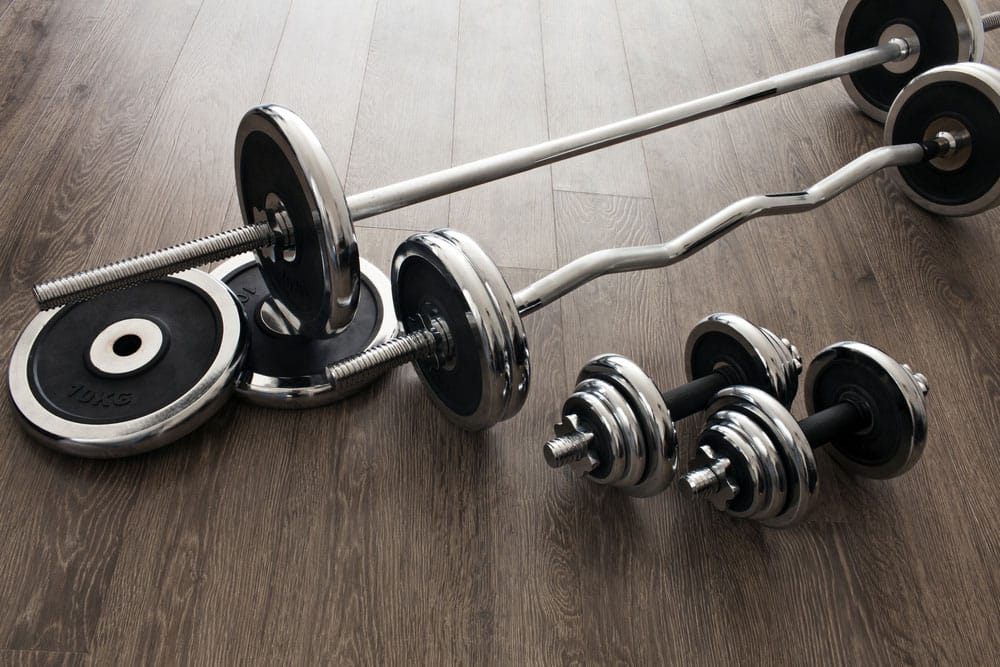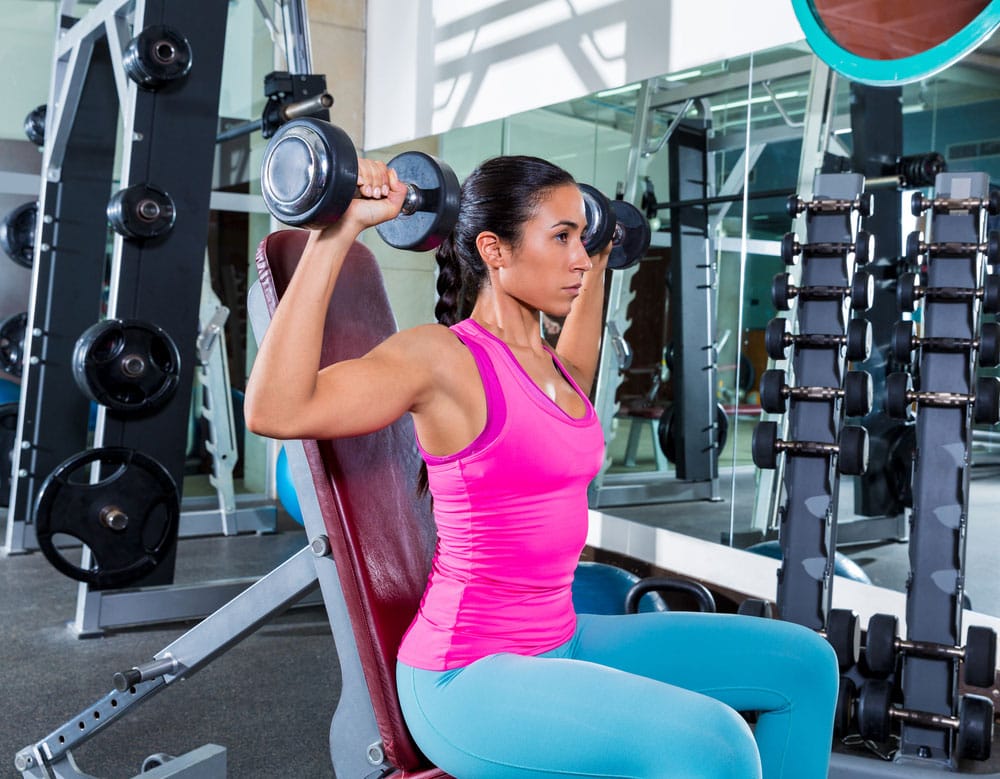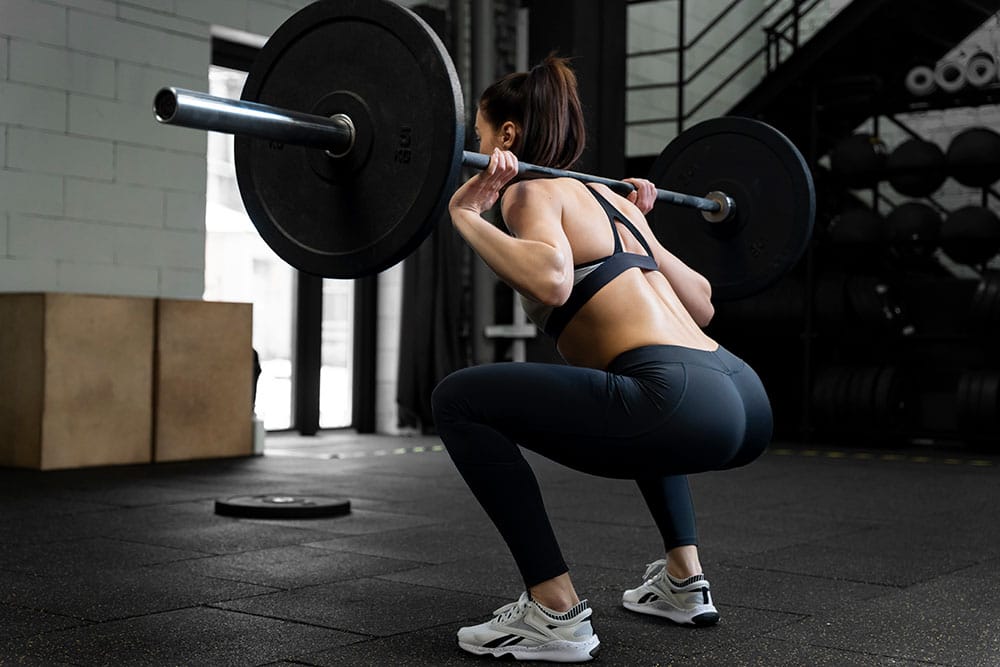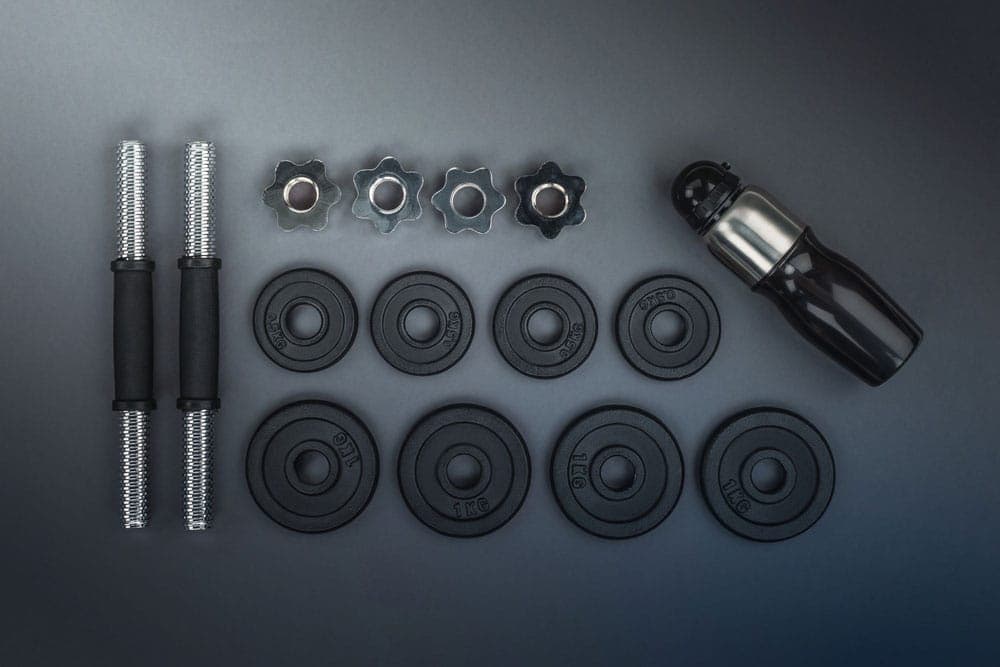Barbell v. Dumbbell: Let’s Settle This Once and for All
Barbell v. dumbbell; who wins in this competition? Learn about the benefits of each and what factors to consider for an informed decision.
Have you ever hesitated between performing an exercise with dumbbells or leveling up and going for the barbell variation?
Truth is, there is no winner in this combat—barbells and dumbbells are both free weights that are great for building muscle. They are different, but none of them is superior to the other. So, instead of eliminating one from your workout entirely, learn how they help you achieve your fitness goals.
If you're currently facing the barbell v. dumbbell dilemma, this article is for you. After reading this, you'll know the unique benefits of each and the factors that influence your choice of equipment.
Barbell v. Dumbbell: The Benefits of Dumbbells
Let's talk about the barbell v. dumbbell. While they're both great pieces of equipment for a good workout, if you put them on a scale, you'll see that dumbbells are superior to barbells in the following points:

They Let You Track How Much You’re Lifting
If you have any experience with dumbbells, you know that they all have a number on them. So, if you’re doing an exercise with dumbbells and you pick two 22-pound dumbbells, you’ll know how much exactly you’re lifting and where you’re standing in terms of progress.
Imagine a few weeks go by and you feel like you’ve gotten stronger, so you go for two 33-pound dumbbells.
With dumbbells, you know exactly how much you can lift for different exercises because an 11-pound dumbbell is 11 lbs everywhere. This is especially important if you’re always switching gyms or working out in different places.
Now, let’s talk about barbells. They’re not just an iron bar you can use to put weight on; they’re actually pretty heavy, and there are so many different types that can get you confused. Here are some popular barbells you’ll see at the gym and how much they weigh:
- Standard or classic barbells: These are the normal barbells you see in every gym. They weigh around 45 lbs.
- Olympic barbells: These look like standard barbells and weigh the same. The difference is that they have rotating sleeves (the part where you put the plates) and are used by professional weightlifters.
- Trap or hex bars: These barbells look like a hexagon. To use a trap bar, you’ll have to stand in the middle and hold its handles. It weighs around 35 to 65 lbs.
- EZ bars: Ever seen those weird zigzagged bars? That’s an EZ bar and it weighs around 20 to 40 lbs.
As you can see, different barbells have different weights. Even the same type of barbell may weigh slightly differently if they’ve been built by different manufacturers. So yes, barbells too have a fixed weight you can take into account before putting some plates on them.
But this could be too much math for you, requiring more effort than just picking a dumbbell with your desired weight. Plus, if you lift lighter than what a barbell weighs, you probably can’t use one at all.

They Address Muscle Imbalances
Ever felt like one side of your body is stronger than the other side? You’re not imagining stuff; we all have a stronger and a weaker side. Muscle imbalance happens because we tend to use our dominant side more than the other one in our daily activities.
This makes the underused muscles tighten and shorten. If we let our muscle imbalance grow, it can cause poor posture, back pain, and disrupted movement patterns.
What’s a great way to make your muscles stronger? You guessed it—it’s lifting weights. But if you use a barbell, you might not be doing your weaker muscles any favors. Imagine that you’re doing barbell shoulder presses (read Military Press vs. Shoulder Press if you want to know the difference).
When doing this exercise with a barbell, your weaker side will try to get away with the work and put most of the burden on the stronger side. If you do the same exercise with dumbbells, your dominant side won’t have a way to compensate for the lack of strength in your other side.
Plus, there has been proof that unilateral training not only strengthens the side you’re working on but also strengthens the opposite side to a degree.

They Enable More Freedom of Movement
If you search for how to do a certain exercise, you’ll stumble upon a thousand instructions that all revolve around the same basics. Having proper form and learning how to follow the steps is very important. It guarantees you’re getting the most out of the movement. Plus, it prevents you from hurting yourself and having to deal with a lot of pain.
With that being said, there’s also something you can’t find in textbooks; you’ll have to learn that with experience. Each exercise has specific instructions. You’ll have to move your body in a predetermined way; that’s a constant. However, there are some nuances in each exercise that make it safer and more convenient for individuals. For example, some find it easier on their shoulders if they tilt their pinkies toward their ears a little bit when doing shoulder presses. This has nothing to do with the established guidelines and requires some know-how about where to set the limit.
Using dumbbells for an exercise allows you to do that. When using a barbell, you can’t move your hands freely, which is not inherently a bad thing. However, with a pair of dumbbells, you can easily apply these modifications that make the movement more beneficial and safer for you.
Barbell v. Dumbbell: The Benefits of Barbells
At this point, you might have fallen in love with the dumbbell and already made up your mind to do nothing but dumbbell exercises. However, we suggest that you take a moment to read about the benefits of the barbell too:

They Help You with Bigger Lifts
The weights of the dumbbells are limited. They range anywhere from 2 lbs to 130 lbs, but it usually doesn’t go beyond that. Sometimes, you want to go really heavy on an exercise. You can't do that with a pair of dumbbells, because you only have two hands. Instead, you can load a bar with multiple plates, allowing you to reach your desired weight.
On the other hand, suppose that two heavy dumbbells would be sufficient to quench your weight thirst. But it would still be harder to pick up two 130-pound dumbbells than going for a weighted barbell. If the weight is the same, why would it be harder?
Allow us to illustrate with an example: Have you ever heard someone say "Why can't you just move the bed? Don't you go to the gym?" Well, the bed in question might weigh the same as what you deadlift or squat (read Squats vs. Deadlifts: A Deep Dive into the Workout Showdown for more info), but your grip isn't the same. The weight that you lift in the gym is evenly distributed. Plus, you have a more solid grip there.
The same goes for the case of the barbell v. dumbbell. The center of gravity (the point where the weight is concentrated) of a barbell is located at its center. This makes it easier to lift when you’re aiming for heavier weights. Plus, unlike the dumbbells where one side of your body could do unexpected movements, the weight is evenly distributed along the bar, helping you with stability.

They Facilitate Compound Exercises
A compound or multi-joint exercise is an exercise that targets multiple muscle groups at the same time. Examples of compound exercises are squats, deadlifts, bench presses, and chin-ups. These are the exercises that gym rats thrive on, and for good reason: While both multi- and single-joint exercises help you build muscle, compound exercises increase your overall strength more than isolation exercises.They’re the MVPs of that Greek god workout. BTW, an isolation exercise targets or ‘isolates’ one muscle group.
Performing a compound movement needs some level of focus. You have to move different joints at the same time while maintaining proper form. That’s why you shouldn’t have to worry about keeping your stability and coordinating your two sides when doing all that. A barbell allows you to focus on the movement pattern without having to think about where each hand should go.
Many compound movements can still be done with dumbbells. It’s not even a downgrade necessarily. For example, when scientists compared the barbell bench press with the dumbbell bench press, they realized that the pectoral muscles (chest muscles) are activated more during the dumbbell variation. Still, if you want to do a compound exercise like a pro, we suggest that you go with a barbell.

They Sometimes Prevent Grip Failure
If you’ve ever experienced grip failure, you’ll understand its mental toll with flesh and blood. Grip failure is when you’re doing an exercise and your hands get so tired that you have to let go of the weight even though your target muscle is far from being fatigued. This is a limiting factor and such a shame because you know you had the potential to do more.
The barbell allows you to work your way around grip failure in some exercises. That's the case in squats and lunges. In these exercises, the barbell is placed on your shoulders. So you can rest easy knowing that your failure originates from your lower-body muscles and not your grip.
Barbell v. Dumbbell: Which Is Safer?
Safety is an important factor in resistance training, especially if you’ve just started lifting. As a beginner, you need some time to figure out how to do the exercises with proper form and what’s best for your body. If that’s your case, starting with dumbbells can be a more cautious choice for you.
Dumbbells allow you to train with more freedom of movement. Plus, if you reach a point where you just can’t do one more rep of an exercise, for example, bench press, you can just drop the dumbbells (don’t drop them on your face though!). The same scenario can be fatal for you if you’re doing barbell bench press: a heavily loaded barbell falls on your neck and there’s no one around to help you, that’s going to be your last day on earth.
The moral of the story is to always have a spotter when doing squats and bench presses with a barbell. Plus, if you’re a newbie trying to make it in the fitness world, start with dumbbells. If that’s what you’ve decided, read these articles:
Barbell v. Dumbbell: Final Verdict
Overall, there is no definitive answer to the question of which is better between a dumbbell or a barbell. If you have to choose between the two, there are several factors to consider.
First, the type of exercise can impact the level of muscle activation when performed with a dumbbell or a barbell. For example, performing biceps curls with a barbell (whether it’s a straight or an EZ bar) targets the biceps more effectively than doing it with dumbbells. In contrast, the serratus anterior (fan-shaped muscle on the side of your chest wall) has been shown to be more active during the dumbbell bench press.
It also depends on your specific goals. For example, if you want to do heavy squats, it’s better to pick a barbell. But imagine that you want to do sumo squats, a variation of the squat with a wide stance, and are trying to make it more glute-biased by hinging forward a little bit. Holding one dumbbell can encourage this form in a more natural way.
A good rule of thumb is to use dumbbells more for upper-body exercises and barbells for lower-body ones. But as you can see, this is not a fixed rule. Finally, it depends on many factors.
Having trouble deciding which equipment to use for your workouts? You need professional help to provide you with a good combination of both. That’s what Flex A.I. does. It takes into account all the factors mentioned earlier and gives you the best workout plan that aligns with your goals. Download the app and start using this and its many other features for free!
Related articles


Get fit with Flex
Build muscle & lose weight fast for free.
Available on iPhone + Apple Watch





